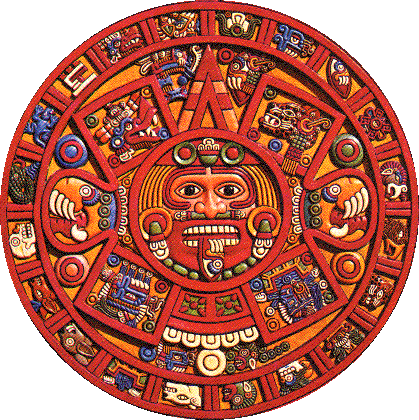
Even with today's technology and modern machines, it is hard for experts to figure out not only how the Mayan's constructed the pyramids, but how they knew astronomy and the way the pyramids aligned with the stars rotations well enough to create the most accurate calendar known today. For centuries they were considered to be magic or in touch with the Gods because only the Gods could perform the things they did.
Uniquely, there is some evidence to suggest the Maya appear to be the only pre-telescopic civilization to demonstrate knowledge of the Orion Nebula. The information which supports this theory comes from a folk tale that deals with the Orion constellation's area of the sky. Their traditional hearths include in their middle a smudge of glowing fire that corresponds with the Orion Nebula. This is a significant clue to support the idea that the Maya detected a diffuse area of the sky contrary to the pin points of stars before the telescope was invented.
They produced extremely accurate astronomical observations; their charts of the movements of the moon and planets were used to predict eclipses and other celestial events such the time between conjunctions of Venus. The accuracy of their astronomy and the "theoretical" calendar derived from it was superior to any other known from seventeen hundred years ago.
Even the Mayan compass can not be reproduced today because it went five directions horizontally which were north, south, east, west, but also where you were at the starting point. It didn't stop there either! Their compass also went up and down and included the heavens, the earth and the underworld. In many other religious traditions, the underworld may have been intreprted as hell and the skys, heaven. This could all be up to debate, but this is just for fun.
Here are a couple things for you to do, one is a little touch of magic for you! Click on the pyramid to go to the Mayan Calendar! The next is to make your own Star Constellation night light by clicking here.


How to Make Banana Paper

A banana plant will only produce bananas one time. After the bananas have been harvested, all that's left on the plants are the stems, or pseudostems. Clearing those stems to plant new crops is an expensive process for farmers. In some countries banana farmers make money by selling the stems for paper manufacture. Since it requires no chemicals, just boiling water and a small bit of electricity to mix the pulp, making banana paper is an eco-friendly process that you can do it at home in an afternoon. You can learn how easy it is by clicking here.

Colorful Birds
 What you will need:
What you will need:
- A computer printer
- crayons or
- colored pencils
These are some of the birds you may see in the Rio Dulce area. Sorry, you won't see a quetzal though. The below pictures are links to drawings by Georgina García Herrera from her coloring book. If want to learn more about these birds and many more, click here to go to the "Did You See That?" websites page on birds.
Click on any picture below to get a full-page ready for printing and coloring! Click on the name of that bird for a bigger picture of it.

Grow Your Own Crystals
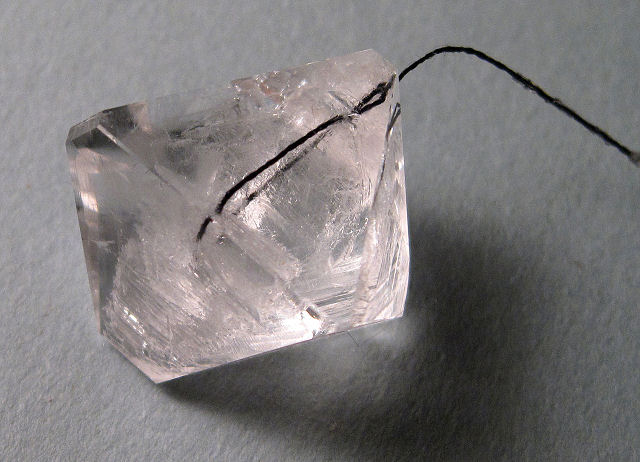 What you will need:
What you will need:
- A clean jar or plastic cups
- salt, sugar, alum or copper sulfate
- water
- thread or fishing line
- ice cream stick
- pan and stove
What can take nature millions of years to grow, you can do with some basic household things in a few days. The principle will help you better understand this amazing planet where we live. Depending on your age, you may need a little help from an adult for this project. You can also make other types of crystals with different chemicals, but I have listed just a few that you may be able to find locally in a market or drug store.
Click on any picture below to get a full instructions! Some of the chemicals are dangerous and need adult supervision. It's best to stick with the household items to learn about crystals anyway.

Paper Pets
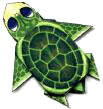

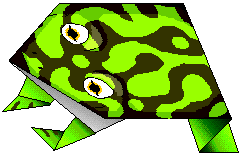
Animals you find here are wild and serve a function in keeping the rainforest healthy so they are best left in the jungle so they can do their job so we can have fresh air to breathe. BUT!!! Here is a way where you can make a pet of your own with paper using an art called oragami. Just click on the critter you want to make for instructions. Just click on the animal you would like for instructions.
What you will need:
- A pair of scissors
- A printer for your computer
- A little time to try something new

Did you hear about your Ant?


All of us are familiar with ants. Unfortunately the first thing we see is that they hurt when they bite or they invade your home and food. But they aren't all bad and they are really pretty interesting when you learn about them. Here is a couple projects you can do. The first is a maze that you click on the image and print it out. The second is how to make an ant farm to be able to watch and study them safely.
If you would like to learn more about some of the ants around here and what to do about and with them, click here. Directions for a more traditional ant farm that you can build is on this website.

A Plant with Its Own Water Tank
Here on the Rio you will see that trees host hundreds of different species of plants. You will see orchids, ferns and even more Bromeliads! These are called epyphites because they don't use the trees for food but their roots are mainly to hang on to their host for dear life. For that reason they are also easy to grow. But here I will show you how to grow another type of bromeliad, the pineapple.
A bromeliad is a tropical plant in the pineapple family (the family Bromeliaceae). Some bromeliads are brightly-colored epiphytes, which live on the branches and trunks of rainforest trees. They have a remarkable way of getting water and food. Their long, curved leaves overlap at the base, forming a tight little bowl -- a perfect water tank! The leaves act as gutters to collect rain, and the tank holds the water. The largest bromeliads hold up to two gallons of water.

Many animals drink from the bromeliad water tanks. And many others actually live in the water held by bromeliads. Scientists have found more than 250 different animal species in the tanks of bromeliads, including frogs and tadpoles, insects and insect larvae, spiders, and worms.
The animals that live in bromeliads bring nutrients to the plant in their droppings and when they die. The spiky leaves of bromeliads trap forest litter, too. Bromeliads can absorb nutrients through special leaf pores, which other plants don't have.
Play with a Pineapple
Directions: That's right, here's a chance to play with your food! Experiment with a pineapple under running water to see how a bromeliad catches water as well as animal and plant stuff that falls into it and feeds it.
What you will need:

- A fresh pineapple
- A sharp knife (to be used with adult supervision)
- A trowel or large spoon
- dirt
- A container to grow the pineapple in water
What to do:
- Choose a pineapple with healthy green leaves. Cut off the top of the pineapple, leaving about 3 inches of fruit attached to the leaves.
- Let the pineapple top dry for a day or two in a place that the bugs won't get to it. Then remove the soft fruit, but leave the core attached to the leaves.
- Fill a container with soil. Plant the pineapple top with the core in the soil and the leaves above the soil.
Water the pineapple plant soil and into the top of the plant so it holds water there.
- Set the pineapple in a sunny place. Water it when the soil gets dry.
Try This!
After your pineapple plant has grown some new green leaves in its center, put the plant outside during warm weather. Place the plant in its container under some shrubs or trees, and leave it for several weeks. (Don't forget to water it if there is not enough rain.)
Check the pineapple plant everyday or so to see what is collecting in its center. After a rain, is there water in the center of the plant or at the base of the leaves? Look for particles of dirt, leaves, pine needles, or flower petals. Are there any insects or worms on the plant?
Of course, a bromeliad has a wider, deeper center than a pineapple does, but you should get some idea of how the bromeliad works. To learn more about bromeliads and other plants in the area click here.

Want to be attractive to butterflies?
OK, maybe you won't look better to a butterfly, but you can attract them to you with some food they like. If you are away from town, on land and have some trees to put a plate under, here's an easy project for you.
 All you need is a plate or pie tin, some papaya peels, banana peels, or other fruit leftovers and a little water. What you do is put the peelings in a plate and put a little water in the bottom of the plate to keep the ants out. Then walk away but keep an eye on it during the day. Blue Morphos LOVE papaya! You may attract some birds too but you have to be patient and very still and quiet if you are in sight of the dish.
All you need is a plate or pie tin, some papaya peels, banana peels, or other fruit leftovers and a little water. What you do is put the peelings in a plate and put a little water in the bottom of the plate to keep the ants out. Then walk away but keep an eye on it during the day. Blue Morphos LOVE papaya! You may attract some birds too but you have to be patient and very still and quiet if you are in sight of the dish.
To learn more about the butterflys you may see here in the Rio area, click here.

Bats in Your Belfry
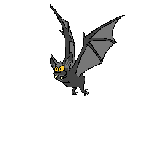 Have you seen any of the bats here? Don't be afraid of them because they keep the mosquito population down and will not attack you. Did you know that half of the population of mammal species here in Guatemala belong to bats? There are even some species that you will only find in this area of the world like the Bulldog fishing bat that you may see flying over the water looking for their dinner at night. Each bat can eat thousands of flying insects an hour. We should all be thankful!
Have you seen any of the bats here? Don't be afraid of them because they keep the mosquito population down and will not attack you. Did you know that half of the population of mammal species here in Guatemala belong to bats? There are even some species that you will only find in this area of the world like the Bulldog fishing bat that you may see flying over the water looking for their dinner at night. Each bat can eat thousands of flying insects an hour. We should all be thankful!
Here's another drawing project for you. Click here for a "connect-the-dots" bat. To print the image, right click on it and select "print..."
If you would like t learn more about some of the bats around here and why you don't need to be afraid of them, click here.

Who Ate Waldo?
The rainforest is a beautiful place. It is also a place to respect and understand that it should be entered only when you know how to be safe. If you do not know the different kinds of things that can hurt you, there is a bigger chance that you won't even see the danger until it is too late. Many animals, reptiles and even insects look much like the areas of the forest that they live in. There are also many of them that protect their homes from predators that may threaten their sources for food and habitat with a bite or painful sting. Below is a sample of how some animals and insects hide in plain sight.

